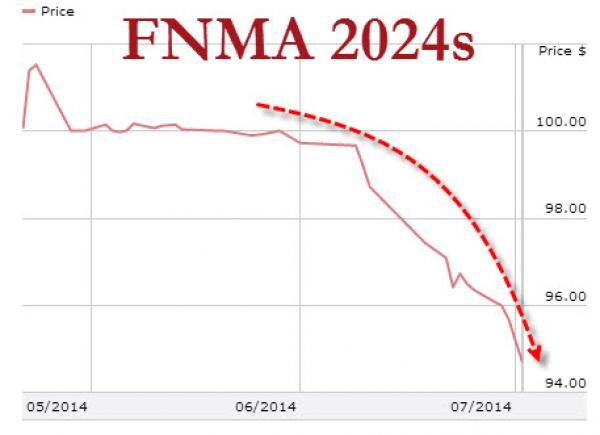Your Money Matters Sell Rules Can Help Investors Decide When the Time Is Best to Dump a Stock
Post on: 3 Апрель, 2015 No Comment

John R. Dorfman
Updated Dec. 9, 1987 11:59 p.m. ET
Deciding to sell a stock can be every bit as important as deciding to buy — and it’s a decision facing more investors now than usual.
Everybody is reassessing the things that they still own, and determining why not to sell them, says Elliott Schlang, a senior vice president of Prescott Ball & Turben Inc. a Cleveland brokerage firm. Meanwhile, changing tax rates are prompting many people to sell now rather than wait until 1988, when stock losses won’t be worth as much in reducing income taxes because of lower rates, and capital gains will be taxed at a higher percentage.
But investors will find they have far less advice to draw on in deciding when to sell than when to buy. At brokerage houses, most of the time the ratio of buy to sell recommendations must be 20 to 1, says Eugene Lerner, a professor of finance at Northwestern University.
As a result, many investors end up holding on to disappointing stocks longer than they wish they had. I know how to get into them, but I don’t know how to get out of them, says Don Andersen, an investor in Wilmington, Del. Sometimes it’s just flipping a coin.
Blasts from the Past
The economic turmoil of fall 2008 has reminded many longtime Wall Streeters of 1987’s market crash. Like today, readers wanted to know how to protect their money, whether they could shield their holdings and, finally, where to invest.
WSJ.com is republishing some personal finance stories from before and after the 1987 crash to help give readers insight from the not-too-distant past.
Here are some other related articles from 1987:
But investment advisers do have some guidelines for selling, and studies indicate that some of these rules can boost an investor’s long-term yield. Investors have to be careful, though, that the sell rules don’t end up generating too much in brokerage fees and other costs.
When asked for all-purpose sell rules, many brokers urge clients to get rid of any stock that declines by more than a certain percentage from its purchase price. If it’s down more than 20%, don’t ask questions — sell the damn thing, says Barry Sahgal, co-director of research at Ladenburg, Thalmann & Co. a New York brokerage firm. Alfred Goldman, director of technical market analysis for A.G. Edwards & Co. in St. Louis, advises selling if a stock declines 8% to 10%. If a stock is going down, it’s going down for good reasons, he says.
Academics and professional investors are divided on whether these sell rules, based simply on a certain drop in the stock price, always benefit the seller — mainly because such strategies can trigger a sharp increase in commissions.
I’m not surprised that people who make their money from commissions recommend this approach, says Avner Arbel, a professor of finance at Cornell University. By definition, it will make a lot of money for them. I don’t like it at all.
Northwestern’s Prof. Lerner and his colleague William Breen have tested various sell rules in computer simulations. Dumping a stock as soon as it declines 10% or so might be a sensible strategy for small growth stocks, Mr. Lerner says. But particularly for undervalued stocks and the shares of larger companies, other sell rules tend to provide better results, Mr. Lerner says.
In a study recently published in the Journal of Corporate Finance, Mr. Lerner tested three sell rules in the trading of certain stocks from 1973 through 1985. One rule was to sell when the company’s earnings for any 12-month period decline compared to the previous 12 months. Another rule was to sell when the stock price gains at least 15% within one month. The third was to sell when a stock’s price-earnings ratio — the share price divided by the company’s per-share profit — climbs above the company’s annual earnings growth rate.

To buy shares for the study, Prof. Lerner selected 50 stocks from those in the Standard & Poor’s 500 stock index. The stocks had to show rising earnings for the most recent 12 months, as well as annual earnings growth of at least 5% for the past five years. The stocks also had to pay a dividend and have a price-earnings ratio of less than the company’s earnings-growth rate. For the study, Prof. Lerner assessed a theoretical 1.5% commission on each purchase and sale.
Of the three sell rules, the simplest one — sell when 12-month earnings decline — brought the best results: an average compounded gain of about 19% annually. Selling when the stock price rose sharply in a month resulted in a 15% return, and the rule using the price-earnings ratio yielded a return of 17%. The S&P 500 advanced about 11% annually for the 12 years covered in the study.
Other academics and professional investors have their own favorite rules for deciding when to sell. Melissa Brown, director of quantitative research at Prudential-Bache Securities Inc. for instance, generally recommends selling a stock when the company’s earnings fall below analysts’ expectations. Like cockroaches, you rarely see just one earnings surprise, she says.
Cornell’s Prof. Arbel suggests getting rid of a stock when three warning signs are present: First, the stock seems tired, rising more slowly than a benchmark, such as the S&P 500, for one to three months. Second, there is weakness in the company’s sales growth and other fundamental factors. The third warning sign is that a stock has become popular among institutions and stock analysts. Mr. Arbel says his research indicates that stocks neglected by such big holders tend to provide better gains.
While differing on which of the sell rules work best, professional investors and researchers generally agree on one bit of advice: Cut your losses and let your winnings run.
The worst portfolio strategy I’ve come across is to take small profits and keep stocks that go down, says Robert Farrell, chief market analyst at Merrill Lynch, Pierce, Fenner & Smith. That way, he points out, you sell your winners and keep your losers, ending up with a portfolio full of toads and frogs.
Michael Stolper, who heads the investment consulting firm Stolper & Co. in San Diego, says many investors make precisely that mistake.
Most individuals will sell the stocks on which they have gains and keep the ones where they have losses, he says. It’s dumb, but they do it. They incur a tax liability and they sell the strongest, best-performing securities. They don’t want to tell themselves or their spouses that they made a mistake.














